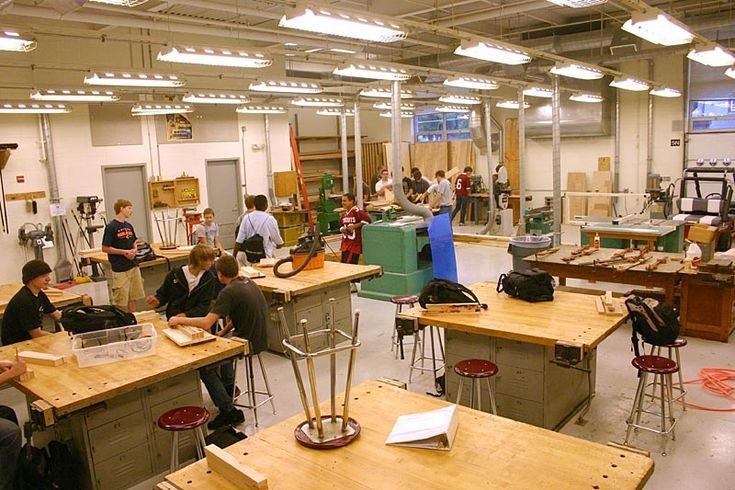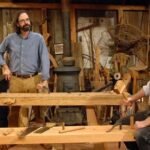A Journey into Japanese Woodworking: Learning the Craft in the Bay Area
So, grab a cup of coffee and let’s chat. You know, I’ve never thought of myself as one of those "crafty" folks. I mean, I grew up in a small town, just outside of the bustling Bay Area. You know how it is—baseball, car mechanics, and the occasional fishing trip. Woodworking? Well, that was something I only saw on TV, maybe during a late-night binge of This Old House.
But then, there I was, bored out of my mind one Saturday, scrolling through Instagram, and bam! There was this ad for a Japanese woodworking class. You know the vibe—beautiful joinery, smooth finishes, and the peaceful aesthetics of wood grain. Before I knew it, I had signed up, probably while I was still half-asleep in my pajamas. Instant regret? Maybe. But curiosity got the best of me.
The First Class: A Mix of Excitement and Anxiety
Walking into that workshop for the first time was like entering a different world. The air smelled like fresh cedar and I could hear the soothing sound of planing wood. The instructor, a quiet man named Akira, was a master craftsman. I mean, this guy could probably build a house from scratch with just a hand saw and a chisel. He was gentle but incredibly precise. You could tell he had devoted years to this.
I still remember my first attempt at using maru noa, the Japanese handsaw. I thought, “How hard can it be?” Spoiler alert: it’s much harder than it looks. I didn’t realize I was supposed to let the saw do the work instead of forcing it down like I was chopping wood for a campfire. After about two minutes of wrestling with a piece of oak, I was drenched in sweat. It seemed like the wood was mocking me at that point. I almost stormed out, like a kid throwing a tantrum because they can’t get their way.
But Akira quietly wandered over, offered a few pointers, and showed me how to stand. Just a slight shift of my body and somehow, the saw glided through the wood like it was butter. I felt like a toddler learning to walk, wobbling and all. It was ridiculous, but I actually felt proud when I made that first clean cut.
The Trouble with Wood Types
As the weeks went on, I started getting a feel for things. I tried my hands at different woods—cherry, walnut, and, of course, my favorite, hinoki. That wood smells divine! You can almost get lost in its aroma. It’s like a spa day in a board. But let me tell you, hinoki is relatively soft, and I almost felt guilty working with it.
My biggest slip-up came when I graduated to more complex projects. I decided to make a small coffee table, thinking it would be an easy starter piece. Ha! That was a naive assumption. I chose this gorgeous piece of cherry wood for the tabletop. I had even stained and polished it, and it looked immaculate.
But—and this is a big but—when it came time to join the legs, I miscalculated and ended up using too-short tenons. I mean, they were barely poking out. Talk about a facepalm moment. I stood in my garage, staring at this table that had so much potential, thinking about how I could’ve told people I made that — only to learn when it came to joints, precision is key.
I almost gave up then and there. I debated tossing the whole thing out, but after a long day at work, I reassessed, took a deep breath, and ended up cutting a new set of legs. I had sweat beading on my forehead, hands trembling just a bit. But after I secured those joints, hearing that satisfying "snap" when they fit together… well, it was like hearing a choir of angels.
Growing as a Craftsman
With each mistake, I started to appreciate the craft more. I learned that, much like life, woodworking is about trial and error. I observed Akira’s patience as he worked on his pieces, the quiet focus mirroring some sort of meditation. Each project became a sort of journey; I found myself getting lost in the rhythm of shavings falling to the floor, the sound of chisels striking wood, and the smell of sawdust filling the air.
I also started meeting some amazing people in the classes. We were all kind of in the same boat—fighting our own frustrations, sharing tips, and cheering for each other’s little victories. I recall one evening, someone shared a bottle of sake after a particularly challenging session. We sat around, admiring each other’s completed projects while taking slow sips, and it felt like a woodworking family was forming.
In the End
So here I am, looking back at that decision to take those classes. It was definitely one of those “Why not?” moments, and boy, it has changed my perspective. I’m no expert yet, but I can tell you this—the joy of crafting something from scratch, the mistakes you learn from, the stories you share with others? That’s what it’s all about.
If you’re sitting there, pondering whether you should give it a shot, just dive in. Don’t worry about making perfect cuts or beautiful joints. Trust me, you’ll get there eventually. You might even laugh at the mistakes you make along the way because, in the end, it’s all part of the experience. So, go on, pick up a piece of wood, and make something—just don’t forget to breathe, and let that saw do the work for you.








